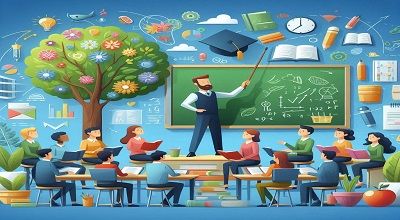Tips For Great Teaching
Tips For Great Teaching encompasses a combination of effective strategies, qualities, and approaches that contribute to a positive and impactful learning experience for students.
Here are 10 simple tips for great teaching:
Know Your Students:
Understand the needs, interests, and learning styles of your students. This knowledge allows you to tailor your teaching methods to better engage and support them.
Create a Positive Learning Environment:
Foster a classroom atmosphere that is welcoming, inclusive, and supportive. A positive environment encourages student participation and collaboration.
Be Clear and Concise:
Clearly communicate your expectations, instructions, and lesson objectives. Avoid unnecessary jargon and use language that is appropriate for the age and comprehension level of your students.
Use Varied Teaching Methods:
Employ a variety of instructional strategies to cater to different learning styles. Incorporate visual aids, hands-on activities, discussions, and technology to keep lessons dynamic and engaging.
Encourage Critical Thinking:
Foster a culture of curiosity and critical thinking. Encourage students to ask questions, analyze information, and express their opinions. This helps develop problem-solving skills and a deeper understanding of the subject matter.
Provide Constructive Feedback:
Offer timely and constructive feedback on students’ work. Highlight both strengths and areas for improvement. Feedback should be specific, encouraging, and actionable.
Adapt to Student Needs:
Recognize that students have different learning paces and may require additional support or challenges. Be flexible in your teaching approach to accommodate diverse needs.
Relate Lessons to Real-Life Examples:
Connect the curriculum to real-world applications. Relating lessons to practical scenarios helps students see the relevance of what they are learning and enhances their motivation.
Build Relationships:
Establish positive relationships with your students. Show genuine interest in their well-being and success. A supportive teacher-student relationship can positively impact the learning experience.
Reflect and Improve:
Regularly reflect on your teaching methods and seek feedback from students. Identify areas for improvement and actively work towards enhancing your teaching skills. Continuous self-evaluation contributes to ongoing professional development.
Final Words
Finally, great teaching is a dynamic and evolving process. These tips provide a foundation, but it’s also important to stay open to new ideas, adapt to changes, and remain passionate about the learning journey.
